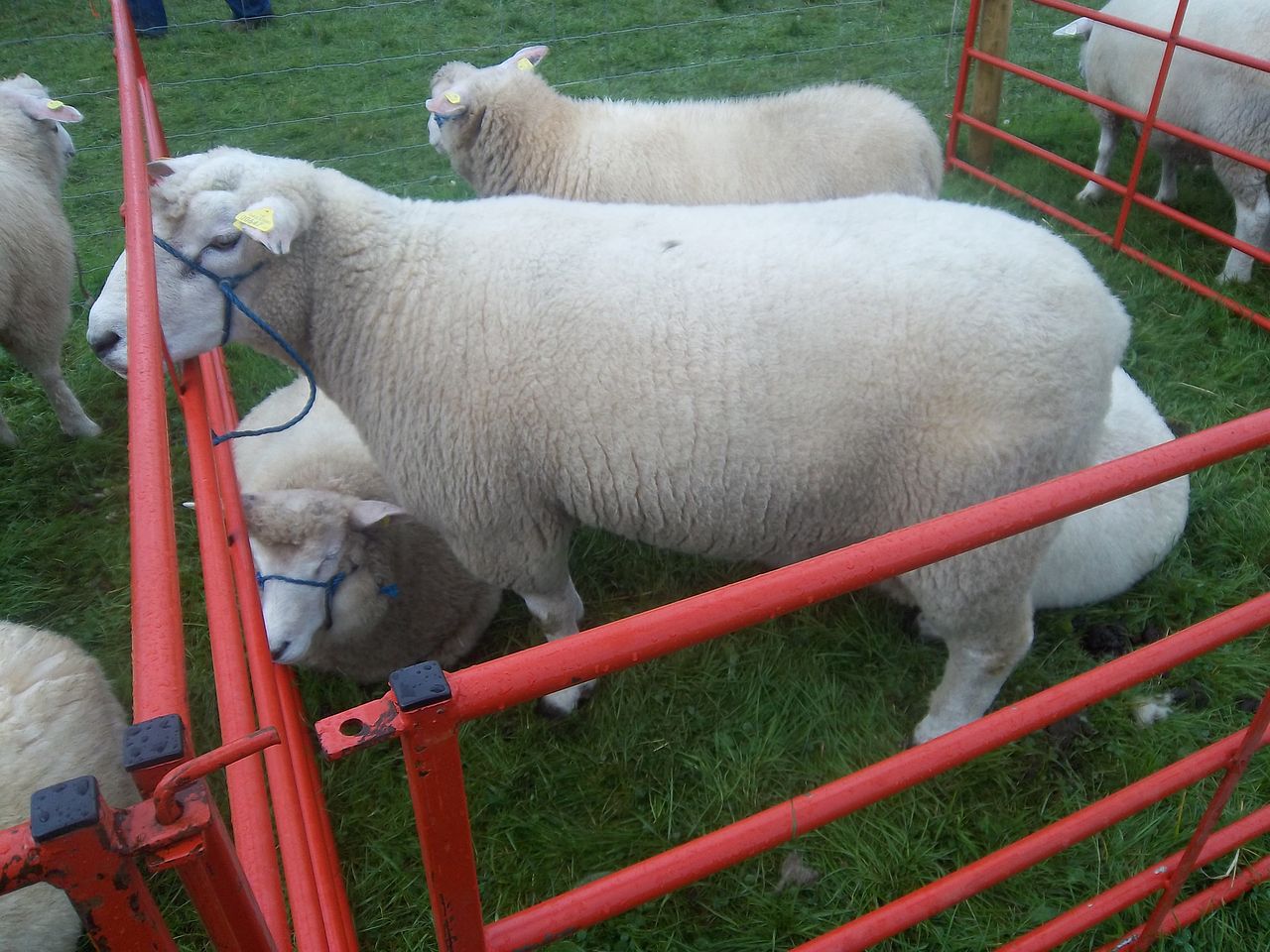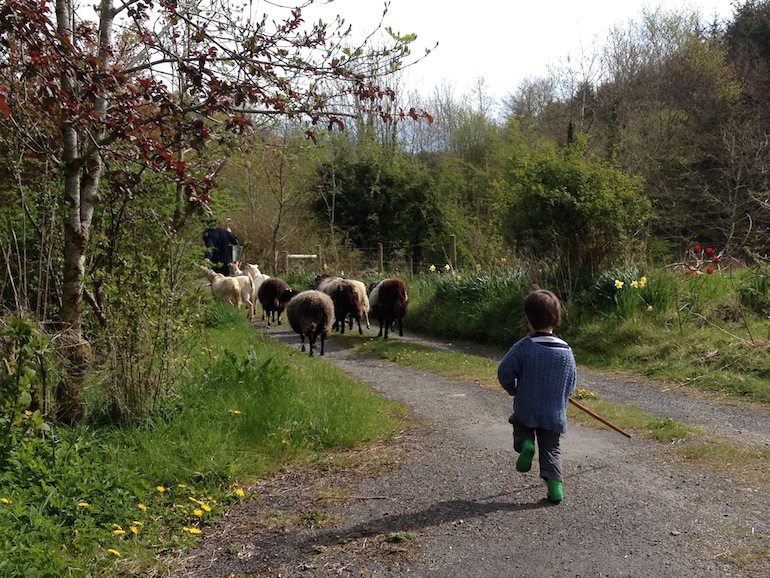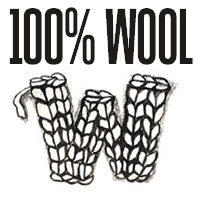Today on our Wovember Words tour of the EU, we are in Ireland. The Irish word for sheep is caorach and the Irish word for wool is olann and we are once again delving into the fantastic The Fleece & Fiber Sourcebook by Deborah Robson and Carol Ekarius. In terms of our theme this year – The Politics of Wool – the background story for what is now considered Ireland’s only ‘native’ breed is intrinsically connected with politics: when Britain conquered Ireland in the 1600s, imported sheep breeds were used to ‘improve’ and supplant the native Irish sheep in a story that echoes others we have found from around the EU. Today, a free, contemporary Ireland has its own sheep breed, crafts, businesses and farming practices, which – like all such native industries – are both threatened by and rising up against the homogenising forces of the global wool industry.
The Galway sheep
At one point in history, Ireland probably had a fair number of native sheep breeds, but today the Galway is the only breed you might consider a native – though it was largely influenced by English Leicesters. The breed was once called the Roscommon, though in actuality there was an earlier Roscommon that was more like the grandparent of the Galway. Lord Roscommon imported Dishley Leicesters – lots of them – from Robert Bakewell in England; he heavily crossed the to the old native sheep, yielding the Roscommon breed, which strongly resembles its Leicester roots. By the early 1920s the Roscommon’s numbers had falled significantly, so in 1923 a group of breeders gathered in the city of Galway and selected a small handful of the finest animals to register in a new breed book. The older and less refined Roscommons became extinct, while the animals registered in the Galway book trucked on and on.
Because it is referred to as an Irish longwool, it’s tempting to think that the Galway might be like the English luster longwools – sleek, shiny, exceptionally long-stapled, and with robust fiber diameters. It’s not, although the shape of the locks and the wavy crimp pattern that can be seen in those locks do resemble the more familiar English Longwools that originated on the other side of the Irish Sea. Galway is more crisp than sleek and has a matte surface, as well as moderate staple lengths and fiber diameters.
What does this mean for yarn spun from Galway? This wool spins up more smoothly than many midrange wools (the Down breeds and others with Down-like, finer crimp), producing yarns hat have a pleasant, firm reliable-feeling character. In simple yarns, like two-plies, the individual strands will retain their identities, giving even stockinette or plain-weave fabrics made from them a sense of underlying texture. In novelty yarns, which are spun to have more texture, the designer effects – like loops, feathery bits of loose surface fiber, slubs or formed knots – have enough body not to be crushed into oblivion. And in yarns spun for smoothness, that fiber-deep character will reveal itself in the fabric; for example, with stitch definition in a textured knitted pattern formed with combinations of knit and purl stitches, or in a nubbly twill weave structure.

Text © Carol Ekarius and Deborah Robson and taken from p.263 of their highly recommended tome, The Fleece & Fiber Sourcebook published 2011 through Storey press.
Irish Crafts
In searching for information about the history of Irish woollen textile traditions, we discovered the amazing Hands series – “A series of fascinating documentaries on traditional Irish crafts and lifestyles, where the emphasis is on the skill of human hands rather than on machines.” Produced by David and Sally Shaw-Smith, Hands is series of thirty-seven documentaries on Irish crafts produced for Irish television (RTÉ). David and Sally travelled the length and breadth of the country recording these personal and revealing films which are as much about the lives of people as the crafts documented. You can buy the textile film series here.
One of the most celebrated woollen textiles of Ireland is Donegal Tweed, documented both in the Hands series, and in a fantastic book by Judith Hoad called This is Donegal Tweed, written in 1987. The book traces the origins of Donegal tweed, its production on hand looms, and how it was being scaled up at the time when she wrote the book, to meet commercial demand. She had this to say about the production of Donegal Tweed, which still rings true today in terms of understanding the origins of the woollen goods we buy:
For the last generation, the romance of hand-production methods has sold Donegal tweed. Pictures of sheep on open mountains, hand-spinners at cottage doors, hand-loom weavers at work in shop fronts have all played their romantic part for the retail purchaser – who may buy a piece of power-loom woven cloth at the end of the day, without realising it. The public are ill-informed about hand-processing of anything and this is why the romance works. And there is a quality about the hand-made article that sets it apart from the machine-made. It is an intangible quality for which there is no word in English. Few people have the awareness to recognise it, but many are deluded by the illusion of it. Only a generation ago Donegal tweed embodied the integration between the sheep, the plants and the human population of its place of production – a kind of symbiosis existed. That symbiosis in the domestic production of tweed has disappeared. mechanised, factory production may clothe more people, but it is in essence impersonal. The individuality – with or without its disadvantages – has gone. I’m a Luddite at heart and I mourn its passing.
Text © Judith Hoad and taken from p.126 of This is Donegal Tweed, published in Ireland by Shoestrings Publications, Inver, Co. Donegal, Republic of Ireland, 1987
Almost thirty years after that prescient text was written, Studio Donegal have revived a tradition of hand-weaving on site, and are also producing woollen spun yarns for hand-knitters.
In terms of reviving a more traceable sheep to skein process elsewhere in Ireland, S-twist are developing systems for enabling farmers with small flocks to produce their own yarns – an enterprise which you can hear much more about in this amazing and highly recommended episode of the Blasta podcast!
Irish Shepherds
To understand more about shepherding in Ireland, we recommend the Diary of a Shepherdess article series written for Olann Magazine by previous Wovember contributor and Irish wool correspondent Caroline Walshe, who also wrote this beautiful piece for us last Wovember.

